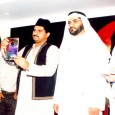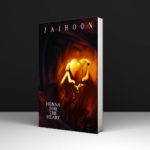Review of the movie, Muhammad: The Last Prophet. (Sallallahu alaihi wa sallam)
This is the age of pessimism. People lament how much bad this world is, rather than how little good there still is. Media is more eager to report on the cracks developing between celebrities than when they get together. The ignorant ones are interested in focusing on differences of opinion between the learned ones… the attention has shifted from adopting the sunnah to the more easy task of criticizing bid’ah. The world is busy cursing darkness while running away from the responsibility of lighting a candle.
Either way, finally I decided to watch it.
I had heard enough of media verdicts,
So I was sure I wouldn’t fall
Among the fanatic movie addicts.
I went in there as a critic: how smart was the movie made without ‘violating’ the fundamental principles. How did the moviemakers handle such a sensitive topic at such a sensitive period?
And as usual, I arrived late, as is my known trait.
The movie ran fine, and so did this viewer’s tears.
Little did I know, and for that very little before Him do I bow, that the nightingale cannot remain indifferent when that Heavenly Rose’s tale is being told…
There was being related the story of the Moon,
Ah! That very Adorable Full Moon,
And in the believer’s eyes tears shone…
After all, this little flower was fragrant, thanks to the teachings of that Heavenly Bouquet that was God-sent.
All our knowledge of tajweed and taareekh, sawm and Zakat, all those who talk of fanaa and baqaa… everything because of that Unlettered One!
The Last Prophet: I saw the movie, and it was an experience really!
True. It had drawbacks- the historic details were missing. Some events were left out altogether. Fine.
What were the intentions of the moviemakers? What did Richard Rich, the producer and director, know of the topic, except that he is well versed in the art of animation classics?
It didn’t matter. A believer’s dreams none but God can shatter.
But the movie I think is of a different sort and the believer’s heart to Madina will it escort.
Every scene if full of life and zeal. Especially those earlier days of persecution in Makkah. The persecution that the Holy Prophet and his few-numbered companions had to face when the faith had hardly any political trace. The sufferings of Bilal, the patience of Sumayya, the courage of Hamza, the acceptance of Negus, king of Abyssinia, the death of Khadija and the grief that it evoked among the believers…
The interesting part of the movie is that its dialogues are in contemporary English (since I saw the English version), and not some worn out broken English, as is the case of most of the religious programs made today. Especially the children audience will definitely feel at home.
The young characters are especially well presented and it is through them that the beauty of Islamic etiquettes is presented.
There is a scene where while in Madina during the making of Masjid Nabawi, the children are shown. The boy rushes to help his father in making of masjid, but his devout mother urges him to first take his lessons from the teacher and reminds him the importance of knowledge given by Prophet. As soon as he finishes his lessons, the boy innocently asks the old teacher, ‘now can I go help my father in making the masjid?’
Another scene in the movie in which, after the signing of Hudaibiyah treaty (a peace treaty between Muslims of Madina and pagans of Makkah), a lady believer sighs with relief and waits for the days of peace for the spread of Islam.
During the scene where it shows the Holy Prophet climbing the high mount towards Cave Hira (only the camera moves without showing his image), a believer automatically recalls like a reflex action the lines of an Arab poet –
Had the Prophet been alive today
Then to him I would say
Walk over my cheeks
Not over this earthly rocks!
I admit that neither the movie nor this review is worth anything to contain the praises of that Praised One. But this animation film is indeed something new for the Muslim world, which is drifting day by day away from its Blessed Leader. God-willing, it will help the young generation to understand, at least in tidbits, the history of Islam and its Prophet. For adults, it will remind them of the lessons of Madina they learnt in their childhood.
But let me confess in embarrassment, that this generous ‘gift’ had to be produced in the West. Those who claim to be Muslims are still busy in ‘settling differences’ and ‘urging the need for peace’. The scholars seems to have contended themselves in issuing fatwas for or against projects as ‘The Last prophet’. The community is living in a world of fanciful conspiracies, attributing every event to some hidden agenda, in order to justify their inability.
It is strange that some rule telling one’s tasbih (rosary) as bid’ah, but no such complaint against walking around with the black cable hanging from one’s ears, whether one is using it or not.
Out of sincerity, may I ask the Muslims to hang their heads in shame… that in such times of crisis, they are unable to do anything about it, be it political, economic or intellectual. Those who are willing and able to do anything, their hands and voice are unfortunately restrained by those in authority. Even in Muslim lands, the condition is no better. Ironically enough, it is the Muslims in non-Muslim countries who are fortunate to do something different. As if Islam is becoming a stranger in its own land…
‘Abu Huraira narrated that the Messenger of Allah, said: “Islam initiated as something strange, and it would revert to its old position of being strange, so good tidings for the strangers.” (Recorded by Muslim, Attirmidthi, Ibn Majah, and Ahmad)
If you ask Jaihoon in one sentence about the feeling that one gets after watching the movie, then he’d rather quote the words of a character who says at the end of the movie, ‘I wish I was alive during the lifetime of Prophet’s companions’ to feel, to experience, to see and hear, to inhale the fragrance of Beloved of Lord!
sallallahu ala Muhammad sallallahu alaihi wa sallam…
November 6th 2002 after watching the movie.
NOTES
Developing the screenplay for Muhammad (pbuh) The Last Prophet involved exhaustive research of the best historical materials available. The story itself was heavily supervised by UCLA-educated screenwriter, Ms. Firdosi Wharton-Ali, and UCLA professor of Islamic Law, Dr. Khaled Abou El Fadl. Each draft of the screenplay was scrutinized for its accuracy as well as its faithfulness to the mission and message of the Prophet Muhammad (pbuh). The final screenplay was submitted to Al-Azhar Islamic Research Academy for review, and approval was received prior to production. A finished film was recently submitted to Al-Azhar Al-Sharief and a screenplay approval of the film was received pending a correction, that Badr is implementing.
Film Consulting Team:
Dr. Khalid Abou El Fadl UCLA
Ms. Firdosi Wharton-Ali UCLA
Dr. John L. Esposito Georgetown University
Dr. John S. Voll Georgetown University
The Making of the Film Muhammad (pbuh) the Last Prophet has been in production for two years and includes more than 196,000 drawings. It was created as a traditional two-dimensional film, but the computer has played a huge role in its creation. Each “cell” is computer painted and fantastic computer effects can be found throughout the production.
All the designing for the film took place at RichCrest Animation in Burbank, California. Under the watchful eye and careful hand of the film’s executive producer, a devout Muslim, characters and backgrounds were created to bring ancient Mecca and its people to life. The designers are all top professionals in their particular discipline as well as accomplished fine artists in their own right. After extensive study they went to work. The result is stunning.
Bringing the vivid characters of Islam’s history to life required an exhaustive search among professional theatre, television, and film actors. Once they were selected, director Richard Rich took them through a series of recording sessions, making sure that each performance was distinct and precise.




2 comments
hi
i would like to know how can i see the english version of the animated movie muhammad pbuh
is there any way to purchase it online or anny other way
thank you
dear sir assalam o alikum
hope ur fine ..i just don’t think that u should’ve appreciated the movie on air on a site which is frequently see by muslims …if u could pleeez tell me wat these people have done is not against islam..its wrong to draw pictures in islam n its also disrespectful that some one draws ics of companions of the prophet (or GOD forbid Prophet(saw) ‘s picture ) i haven’t sen the movie but i have seen some of the cartoon movies on our prophets like “prince of egypt” n “joseph prince of dreams ” i don’t think so non muslims should be allowed to make cartoon movies on our prophets ..i dunno i just don’t feel convinced at wat u said ..to me its not correct ..can u pleeez kindly tell me if i am wrong
thanking u heartly
p.s i reeelly llike mr.jaihoon’s poetry ..i also have a bit similar ideas although i stand far far far faaaaaaaaaaaaaaaaaaarrrrrrrrr behind yet i love his poetry ,very nice masha’allah n i also like the fact that he considers whole of the prevoius subcontinent(..pakistan bangladesh n india) his home 🙂 i think thats wat he meaans when he write “mera watan wahin hai”
06/06/2003